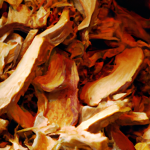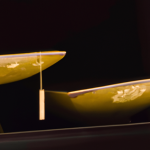The History and Origins of Acupuncture: Tracing Needles and Nodes through Time
Acupuncture, an ancient healing practice that involves the insertion of thin needles into specific points on the body, has a rich and fascinating history that spans thousands of years. Its origins can be traced back to ancient China, where it was developed as part of Traditional Chinese Medicine (TCM). Today, acupuncture is widely recognized and practiced around the world for its numerous health benefits.
The exact origins of acupuncture are shrouded in mystery, as there is no written record of its early development. However, archaeological evidence suggests that the practice may have been in existence as early as 6000 BCE. Ancient stone needles, believed to have been used for acupuncture, have been discovered at various sites in China.
The earliest written documentation of acupuncture can be found in the Huangdi Neijing, or the Yellow Emperor’s Inner Canon, which is one of the oldest medical texts in China. Compiled around 200 BCE, this influential text describes the theory and practice of acupuncture in great detail. It outlines the concept of Qi, the vital energy that flows through the body, and the meridians, or energy pathways, through which Qi circulates.
According to TCM theory, illness and disease are caused by an imbalance or blockage of Qi in the body. By inserting needles into specific acupuncture points along the meridians, the flow of Qi can be restored, promoting healing and overall well-being. This holistic approach to healthcare focuses on treating the root cause of the problem, rather than just the symptoms.
Over the centuries, acupuncture continued to evolve and gain popularity in China. It was practiced by physicians and scholars, who refined the techniques and developed new theories. Acupuncture was also influenced by other medical traditions, such as Ayurveda from India and Hellenistic medicine from Greece.
During the 17th century, acupuncture faced significant challenges in China due to the introduction of Western medicine. The practice was criticized and even banned at times, as it was seen as unscientific and superstitious. However, acupuncture managed to survive and even thrive during this period, thanks to the efforts of dedicated practitioners who preserved and passed down the knowledge.
In the 20th century, acupuncture began to gain recognition in the Western world. It was introduced to the United States in the 1970s, primarily through the efforts of Chinese immigrants. Initially, acupuncture was met with skepticism and disbelief, but as more research and clinical trials were conducted, its effectiveness became increasingly evident.
Today, acupuncture is widely accepted as a safe and effective treatment for a variety of conditions. It is commonly used to alleviate pain, reduce stress, and promote relaxation. It is also used to treat a range of health issues, including digestive disorders, respiratory problems, and fertility concerns.
As acupuncture continues to gain popularity, research into its mechanisms and benefits is ongoing. Modern technology, such as functional magnetic resonance imaging (fMRI), has allowed scientists to study the effects of acupuncture on the brain and nervous system. These studies have provided valuable insights into how acupuncture works and have helped to validate its efficacy.
In conclusion, the history and origins of acupuncture are deeply rooted in ancient China. From its humble beginnings thousands of years ago to its current status as a widely recognized and practiced healing modality, acupuncture has come a long way. Its journey through time is a testament to the enduring power of this ancient healing art. As we continue to explore and understand the intricacies of acupuncture, we can look forward to even greater advancements in its application and benefits.
Understanding the Science behind Acupuncture: How Needles and Nodes Impact the Body

Acupuncture, an ancient practice that originated in China thousands of years ago, has gained popularity in recent years as a holistic approach to healing. This traditional Chinese medicine technique involves the insertion of thin needles into specific points on the body, known as acupuncture points or nodes. While some may view acupuncture as a mystical or pseudoscientific practice, there is a growing body of research that supports its effectiveness in treating a variety of conditions.
At the heart of acupuncture lies the concept of Qi (pronounced “chee”), the vital energy that flows through the body along pathways called meridians. According to traditional Chinese medicine, when the flow of Qi is disrupted or blocked, it can lead to illness or pain. Acupuncture aims to restore the balance of Qi by stimulating specific acupuncture points along the meridians.
But how exactly do needles and nodes impact the body? The answer lies in the complex interplay between the nervous system, the immune system, and the release of natural pain-relieving chemicals.
When an acupuncture needle is inserted into an acupuncture point, it stimulates the nerves in that area. This stimulation sends signals to the brain, triggering a cascade of responses. One of the key responses is the release of endorphins, the body’s natural painkillers. Endorphins not only help to alleviate pain but also promote a sense of well-being and relaxation.
In addition to endorphins, acupuncture also activates the body’s immune system. Research has shown that acupuncture can increase the production of white blood cells, which play a crucial role in fighting off infections and diseases. This immune-boosting effect can help to strengthen the body’s defenses and promote overall health.
Furthermore, acupuncture has been found to have a regulatory effect on the nervous system. It can help to calm an overactive sympathetic nervous system, which is responsible for the body’s fight-or-flight response. By promoting relaxation and reducing stress, acupuncture can have a positive impact on various conditions that are exacerbated by stress, such as anxiety, insomnia, and digestive disorders.
While the exact mechanisms behind acupuncture’s effects are still not fully understood, modern scientific research has provided valuable insights into its potential benefits. Numerous studies have shown that acupuncture can be effective in treating a wide range of conditions, including chronic pain, migraines, infertility, and even depression.
Moreover, acupuncture is generally considered safe when performed by a trained and licensed practitioner. The needles used in acupuncture are extremely thin, and the insertion is typically painless. Many people find acupuncture to be a relaxing and enjoyable experience, often describing a sense of deep relaxation and rejuvenation after a session.
In conclusion, acupuncture’s ancient chronicles are rooted in the understanding of how needles and nodes impact the body. By stimulating specific acupuncture points, acupuncture can activate the body’s natural healing mechanisms, including the release of endorphins, the modulation of the immune system, and the regulation of the nervous system. As more research continues to shed light on the science behind acupuncture, its potential as a safe and effective treatment option for various conditions becomes increasingly evident. So, if you’re seeking a holistic approach to healing, consider giving acupuncture a try and experience the ancient wisdom that has stood the test of time.
Exploring the Benefits of Acupuncture: Healing and Wellness through Needles and Nodes
Acupuncture, an ancient practice that originated in China thousands of years ago, has gained popularity in recent years as a holistic approach to healing and wellness. This traditional Chinese medicine technique involves the insertion of thin needles into specific points on the body, known as acupuncture points or nodes, to stimulate the body’s natural healing abilities. While some may be skeptical of the effectiveness of acupuncture, countless individuals have experienced its benefits firsthand.
One of the primary benefits of acupuncture is pain relief. By targeting specific acupuncture points, practitioners can help alleviate chronic pain caused by conditions such as arthritis, migraines, and back pain. The insertion of needles stimulates the release of endorphins, the body’s natural painkillers, providing immediate relief and promoting long-term healing. Many individuals who have tried acupuncture report a significant reduction in pain and an improved quality of life.
In addition to pain relief, acupuncture is also known for its ability to reduce stress and promote relaxation. The insertion of needles into specific points on the body helps to balance the body’s energy flow, known as Qi, and release tension. This can have a profound impact on mental and emotional well-being, helping individuals feel calmer, more centered, and better equipped to handle the challenges of daily life. Regular acupuncture sessions can be a valuable tool in managing stress and maintaining overall wellness.
Furthermore, acupuncture has been found to have a positive impact on mental health conditions such as anxiety and depression. By targeting specific acupuncture points, practitioners can help regulate the production of neurotransmitters in the brain, such as serotonin and dopamine, which play a crucial role in mood regulation. Many individuals who have incorporated acupuncture into their mental health treatment plan have reported a reduction in symptoms and an improved sense of well-being.
Acupuncture is not only beneficial for physical and mental health but also for promoting overall wellness. By stimulating the body’s natural healing abilities, acupuncture can help boost the immune system, improve digestion, and enhance sleep quality. Many individuals who receive regular acupuncture treatments report fewer illnesses, improved digestion, and a more restful night’s sleep. This holistic approach to wellness focuses on treating the root cause of health issues rather than just the symptoms, leading to long-lasting results.
It is important to note that acupuncture is a safe and non-invasive treatment when performed by a trained and licensed practitioner. The needles used in acupuncture are extremely thin, and the insertion process is virtually painless. Many individuals find the experience of acupuncture to be deeply relaxing and rejuvenating.
In conclusion, acupuncture is an ancient practice that offers a wide range of benefits for healing and wellness. From pain relief to stress reduction and improved mental health, acupuncture has the potential to transform lives. By targeting specific acupuncture points, practitioners can tap into the body’s natural healing abilities and promote overall well-being. If you are seeking a holistic approach to health and wellness, acupuncture may be worth exploring. Give it a try and experience the ancient chronicles of needles and nodes for yourself.


